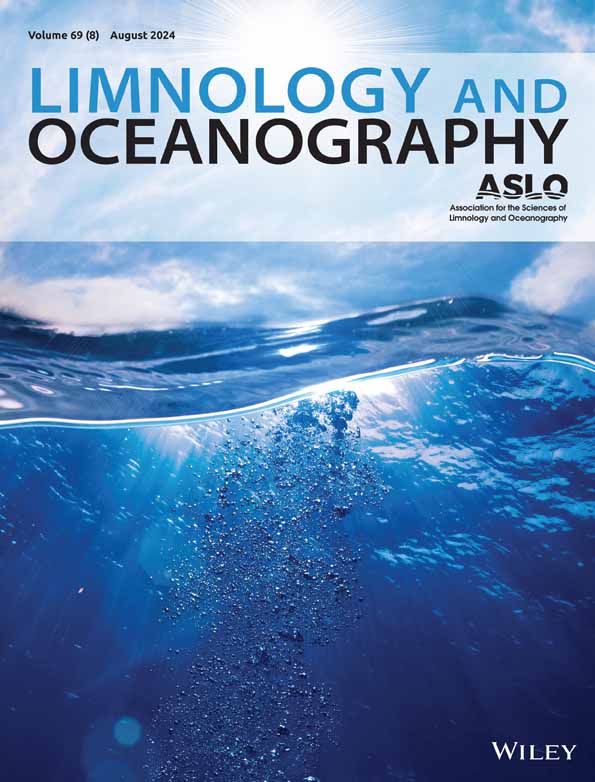Carbon sedimentation in shallow floodplain lakes
IF 3.7
1区 地球科学
Q1 LIMNOLOGY
引用次数: 0
Abstract
Shallow lakes are increasingly recognized as important sites for organic carbon (OC) storage. However, the drivers of OC deposition in shallow floodplain lakes remain unclear due to complex terrestrial and aquatic interactions. Using 8 yr of monthly sediment trap data in a cross‐ecosystem experiment on six UK shallow lakes of varying riverine connectivity, we investigated the role of allochthonous (fluvial materials) vs. autochthonous (phytoplankton production) deposits as the OC supply to lake sediments. Organic carbon sedimentation rates in river‐connected (1.3 ± 1.2 g C m浅水漫滩湖泊的碳沉积
浅湖作为有机碳(OC)储存的重要场所日益被人们所认识。然而,由于复杂的陆地和水生相互作用,浅水漫滩湖泊OC沉积的驱动因素尚不清楚。在英国6个河流连通性不同的浅湖进行的跨生态系统实验中,我们利用8年的月度沉积物捕集器数据,研究了外来(河流物质)与本土(浮游植物生产)沉积物作为湖泊沉积物OC供应的作用。与河流相连的湖泊(1.3±1.2 g C m−2 d−1,平均值±SD)和孤立湖泊(0.5±0.4 g C m−2 d−1)的有机碳沉积速率超过了以前发表的温带富营养化湖泊的沉积速率。广义线性混合效应模型发现水体叶绿素a是大多数湖泊OC沉积的最佳预测因子,这表明原生浮游植物的生产是OC沉积的主要驱动因素,尽管受到河流养分供应的刺激。碳(C)向沉积物的转移受到水流的调节;在大洪水期间,浮游植物可能被冲出湖泊,减少了OC的沉积。无机碳沉积在春、夏、冬三季对碳沉积的贡献是间歇性的。研究表明,浅水漫滩湖泊是碳沉积的重要场所,在生长季节向沉积物中转移的碳最多。未来水文变异性的增加可能会对浅层洪泛平原湖泊保留和封存碳的能力产生负面影响。
本文章由计算机程序翻译,如有差异,请以英文原文为准。
求助全文
约1分钟内获得全文
求助全文
来源期刊

Limnology and Oceanography
地学-海洋学
CiteScore
8.80
自引率
6.70%
发文量
254
审稿时长
3 months
期刊介绍:
Limnology and Oceanography (L&O; print ISSN 0024-3590, online ISSN 1939-5590) publishes original articles, including scholarly reviews, about all aspects of limnology and oceanography. The journal''s unifying theme is the understanding of aquatic systems. Submissions are judged on the originality of their data, interpretations, and ideas, and on the degree to which they can be generalized beyond the particular aquatic system examined. Laboratory and modeling studies must demonstrate relevance to field environments; typically this means that they are bolstered by substantial "real-world" data. Few purely theoretical or purely empirical papers are accepted for review.
 求助内容:
求助内容: 应助结果提醒方式:
应助结果提醒方式:


